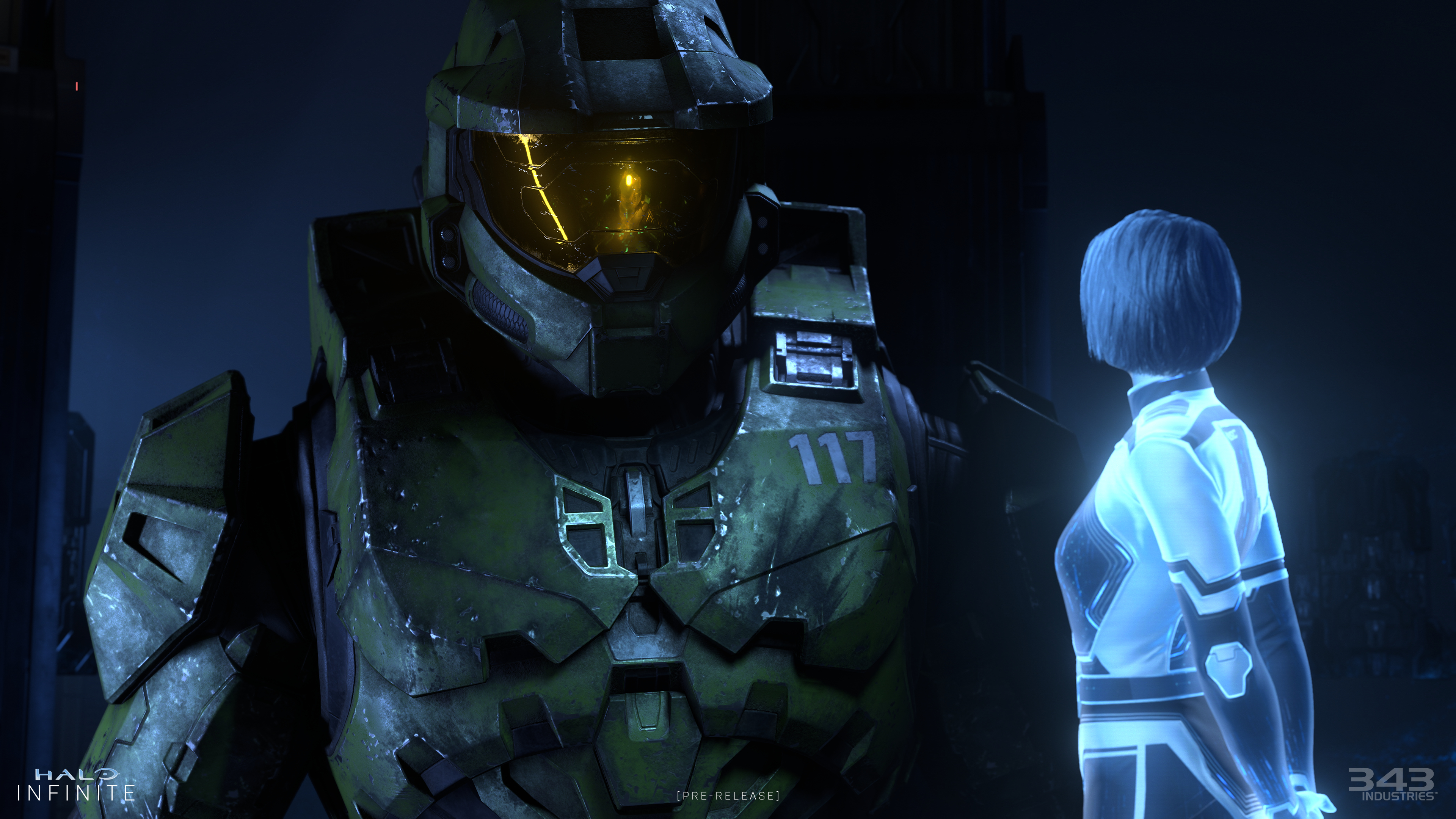Halo Infinite interview: the animation behind the Xbox Series X shooter
An in-depth interview with Halo Infinite's animators

You'll know that Microsoft Game Studios and 343 Industries are the key players who brought Halo Infinite to life. However, there's a multitude of support studios who worked on Infinite in the background, all doing their bit to help make Halo Infinite as good as it could possibly be.
One such supporter is CounterPunch – a Virtuos Studio, an animation studio that helped give life to many of Halo Infinite's characters. From Cortana to the loveable Pilot, CounterPunch was at the forefront of bringing its motion capture expertise to the popular Xbox Series X/S first-person shooter.
In an exclusive interview with TechRadar Gaming, we spoke to three staff members. That included Kay Arutyunyan, general manager of CounterPunch, alongside Mason Gardner and Kyle Renteria, lead animator and animation supervisor at CounterPunch respectively.
Animating Halo

At what stage of the development process was CounterPunch approached by 343 Industries to help work on Halo Infinite?
Kyle: CounterPunch was approached by 343 Industries (343i) to support the cinematics once motion capture and cinematic development were ready for animation processing just before the pandemic-led lockdowns in 2020.
Mason: This was a title our entire team was very excited about. And it was an incredible project to continue to work on through the early days of lockdown.
Halo Infinite was famously delayed at the final hour. How did the extra development time help the team realize its goals?
Sign up for breaking news, reviews, opinion, top tech deals, and more.
Kyle: Our involvement in the cinematic development was completed before the delay was announced. We did, however, go back and improve a small portion of the original work due to the delay.
Mason: Our goal for working in cinematics animation is to make the characters relatable and believable to the audience. We were able to achieve these goals by working closely with our client’s Lead Narrative for Cinematics and their Lead Rigger for the character rigs.
How did the pandemic impact the development process, and have you implemented any permanent changes that were spurred on by a new way of working?
Kyle: The pandemic brought some challenges that we were able to overcome. We found it beneficial to have more frequent conversations with 343i in the creative process as well as the technical development to ensure we stayed true to the vision of how the cinematics should be.
Mason: To also ensure we achieved that vision on our team, we held better ways of communicating feedback and direction internally. To sync everyone working from home and to feel like we were in the same space, we held a lot more video chats and screen shares to provide the feeling of being next to each other at any time.
Pour one out for the Pilot

The Pilot is one of the most emotional characters in Halo Infinite’s story. What sort of technology was used to achieve such convincing expressions?
Mason: The Pilot was one of our favorite characters to work on! He was such an expressive character. This gave us a good range of emotions to play with.
Kyle: Our company is highly skilled in FACS (Facial Acting Coding System) based facial animation and this core background competency allowed us to really understand the movement of the face. Since the rigging of the character used a FACS-based rigging system, we were able to create realistic movements and expressions that helped us gain realistic and believable performances. We were in high communication with the 343i team to ensure the acting/emotional beats were acted out as needed.
Do you have any fascinating insights you can share with Halo fans that they might not be aware of when it came to the development of the game?
Kyle: Something fascinating to us that Halo fans may not be aware of is just how much the actors put into their roles. Jen Taylor (Cortana, The Weapon, Halsey), for example, would shed tears during some of the more emotional moments.
Mason: We did our best to really try to capture their performances and translate them into the characters.
Did you hide any easter eggs in Halo Infinite’s animations, like the hippo on the shotgun shell in the original Halo?
Kay: You’ll have to play to find out!
Was it difficult to balance putting your own creative mark on Halo Infinite while keeping a sense of familiarity? Did 343 Industries set out any specific dos and don’ts?
Mason: We wanted to make sure the creative decisions were directed by 343i for each character. When receiving a new character to work on, we spoke in detail with our client – about how each character will be animated in the game, what their role will be in the story ark, and how expressive the client wanted to push each character to be.
Kyle: We asked a lot of questions and got a lot of answers. We stayed true to the personalities that were already developed and helped build new personalities for newer characters.
What was it like doing the research for Mortal Kombat 11? What resources do you use when it comes to animating a fatality?
Kay: Our leads spend time researching art forms that we animate for each project we work on, whether that be fighting or dancing. We can only bring realistic animation to life if we spend time in pre-production, studying the realistic movements we are trying to portray in our animation.

Rhys is TRG's Hardware Editor, and has been part of the TechRadar team for over four years. Particularly passionate about high-quality third-party controllers and headsets, Rhys strives to provide easy-to-read, informative coverage on gaming hardware of all kinds. As for the games themselves, Rhys is especially keen on fighting and racing games, as well as soulslikes and RPGs.